
-
Duration 21 Days
-
Level Beginner to Intermediate
-
Certification 200 Hour RYT - Yoga Alliance
-
Yoga Style Multistyle Yoga & Ayurveda
-
Language English
-
Date 1st to 21st of every month

200 Hour Multistyle Yoga & Ayurveda Course
Registered with Yoga Alliance USAAyurveda and Yoga are two sister sciences connected to the Vedic roots. Both are practical systems with a holistic perspective on human beings helping us to live the right way and guiding us toward physical, mental, emotional & spiritual balance & inner harmony. Through diet, lifestyle, manual treatments, and herbs Ayurveda focuses on keeping the individual healthy, and practicing yoga helps to overcome our limitations and become truly free within.

Course Syllabus
200 Hour Yoga Teacher Training & Ayurveda Course Syllabus- Introduction to Ayurveda
- Pillars of health
- The concept of 5 elements and gunas
- All about doshas - Vata, Pitta, Kapha
- What is my dosha? (body & mind constitution), guided self - assessment
- The concept of Agni - the foundation of health
- The concept of Ama - the main reason for disease
- The understanding of disease in Ayurveda, stages of disease, factors causing excess of dosha in the body & mind, signs of imbalances and treatments
- Vikriti - current imbalances (guided self - assessment)
- How to balance your dosha with diet, lifestyle, and treatments
- Practical class - Vasti oil treatment
- Daily support for health - Dinacharya & Ritucharya
- Practical class with Abhyanga self - massage and Marma face & head massage
- Food for Body & Mind - Ayurveda in the kitchen (6 tastes diet, Sattvic food, food combinations, lifestyle practices for healthy eating)
- Ayurvedic cooking practical class
- Ayurvedic view on Asana & Pranayama
- Home remedies & Herbs for common imbalances
- On 1st week - Introduction to Ashtanga yoga followed by Sun salutation A & B.
- On 2nd week - Standing sequence postures & use of yoga props.
- On 3rd week - Seated sequence postures & Finishing postures.
- On 4th week - Mysore style & Teaching practice.
1st Week -
- Pawanmuktasana series A
- Surya Namaskar (Hatha)
- Virbhadrasana A & B
- Utthita Trikona asana
- Parvakonasana
- Parivritta parsvakonasana
- Parsvaottanasana
Sitting Postures -
- Bhardwaj asana
- Merudanda vakrasana
- Ardha matsendrasana
- Ardha ustrasana
- Bhujangasana
- Ardha salbasana
- Paschimottasana
- Janusirsasana
- purvottansana
- pawan muktasana series B
- pawan muktasana C / A
- Surya namaskar B
- Trikonasana
- Parsvakonasana
- Virbhadrasana A
- Virbhadrasana B
- Ardha chandrasana
- Virbhadrasana
- Natrajasana
- Vriksasana
2nd week -
- Pawan Muktasana C / A
- Surya Namaskar B
- Trikonasana
- Parsvakonasana
- Virbhadrasana A
- Virbhadrasana B
- Ardha Chandrasana
- Virbhadrasana C
- Utthita Hasta Padangusthasana A/ B
- Vriksasana
- Garudasana
Sitting Postures -
- Marichyasana A
- Marichyasana B
- Marichyasana C
Back Bending Postures -
- Ustrasana
- Rajkapottasana
- Dhanurasana
- Chakrasana
- Setubandhasana
Forward Fold -
- Paschimottanasana
- Janu sirsasana
- Triangmukha ekapada paschimotanasana
- Gatyamal paschimotanasana
- purvottanasana
- Inversions
- Sarvagasana
- Core exercises
3rd Week -
- Sun salutation A/ B/ C (Hatha yoga)
- Sequencing
- Virbhadrasana A & B
- Trikonasana
- Parivrtta Trikonasana
- Parsvakonasana
- Parivrittaparsvakonasana
- Arm-balancing
- Bakasana
- Mayurasana
- Eka padabaka dhyanasana
- Parsva bakasana
- Dwi hasta bhujasana
- Hamasana
- Vashisthasana
- Vrischikasana
- Kaundilyasana
- Astavakrasana
- Inversions
- Sarvangasana
- Sirsasana
- Halasana
- Karnapidasana
- Matsyasana
- Savasana
- Teaching methodology
- Introduction to Yoga Philosophy ,
- its philosophy and evolution
- Introduction to yoga sutras of patanjali
- Nadis ( Ida Pingala& Sushumna)
- Chakras the energy channels
- Explanation to Hatha yoga limbs (Shatkarma, Asana, Pranayama etc.)
- Introduction to Yoga Philosophy(Yog Darshan)
- Eight limbs of Ashtanga Yoga
- Pancha - Vayus
- Panchakoshas
- Sattva , Rajas & Tamas (Triguna)
- 4 padas of yoga sutras
- 3 Ages
- Lives of yogis (Inspiring stories)
- Introduction to Vedas
- Question & Answers
- Body Movement & Planes
- Joints and How to Protect them
- Anatomy and Physiology of Muscles
- Anatomy and Physiology of Ankle
- Anatomy and Physiology of Knee
- Anatomy and Physiology of Hip
- Anatomy and Physiology of Spine
- 8. Anatomy and Physiology of Shoulder
- Breathing mechanism in Yoga
- Workshop on different Asanas
- Physiology of Muscles
- Short introduction to Mudras & Bandhas
- Food & Digestive System
- Introduction to Respiratory System
- Introduction to Nervous System
- Introduction of Pranayama
- Intoduction to shatkarma
- Benefits of pranayama
- introduction to meditative poses
- Introduction to mudras
- General guidelines
- Clavicular Breathing
- Thorocic Breathing
- Diaphragmatic Breathing
- Yogic Breathing
- Ujjayi
- Bhastrika
- Kapalbhati
- Nadi - Sodhana
- Bhramari
- Surya - Bhedi
- Chandra - Bhedi
- Sheetali
- Sheetkari
- Rubber-neti
- Eye-cleansing
- Kapalbhati- cleansing the lungs
- kunjal- stomach cleansing
- Mula Bandhas
- Udiyana bandha
- Jalandhar bandha
- Maha bandha
- Jnana mudra
- Chin mudra
- Shanmukhi
- Bhairava mudra
- Shambhavi mudra
- Nasikagra/ pranav
- Fundamentals of Body alignment
- What is need of alignment
- Standing poses
- Seated postures
- Backward extension postures
- Forward extension postures
- Twisting postures
- Inverted postures
- How to do a pose
- What is alignment of a pose
- Common mistakes
- Precautions
- Contraindication
- Benefits
- Modification
- Verbal adjustments
- Hands on adjustments
- Introduction to Meditation
- Why Meditation ?
- Obstacles in Meditation
- Role of concentration in Meditation tips for developing concentration Meditation on Body and Breath
- Different types of meditation technique
- Om / Mantra Meditation
- Antat and Bahir
- Trataka
- Osho Dynamic meditation
- Tips for Silence Meditation Practice Japa Meditation
- Ajapa japa
- Antar mouna
- Nada bhrahma Meditation
- Om Asato Maa Sadgamaya (Mantra from Upanishad)
- Tvameva mata ca pita Tvameva (Sloka on gods)
- Vande Gurunam Charnarvinde (Ashtanga opening mantra)
- Guru Brahma Guru Vishnu Gurudevo maheshwara (Guru stotram)
- Swasti Prajabhyay (Ashtanga closing mantra)
- Tvameva mata ca pita Tvameva (Sloka on gods)
- Om Tryambakam Yajamahe (Mantra on lord shiva)
- Om sahana vavatu (Mantra from Upanishad)
- Yogena Cittasya (Sloka on sage Patanjali)
- Hare rama, Hare Krishna (Maha mantra)
- How to sequence a class
- How to work with breathing and posture to create an appropriate sequence
- How to adjust
- How to work with different level of students
- How to cue / instruct at different level
- Building Positive & conscious communication, Friendship and trust
- Time management
- Qualities of a teacher
- Principles of demonstration, observation.
- Assisting
- Correcting
- Use of voice in class
- Mental & emotional preparation for teaching
- Class preparation
- Step by step class structure planning.
- Written Test
- Asana Practical Test
- Attendance
- Performance
- Behaviour
- Sound Healing
- Acro Yoga
- Iyenger Class
- Ayurvedic Class
- Kirtan Session
Note:- all these additional classes are not part of the course but included additionally

Daily Schedule
Daily Schedule of 200 Hour Yoga Teacher Training & Ayurveda Course- Please Carry a White Dress For Course Cermony
- As for Yoga gear, we recommend carrying a couple of pairs of leggings or yoga pants and supportive tops, especially if you have a favorite style.
- Pants (for yoga, town, travel, hiking)
- Tops (for yoga, short or long sleeved shirts for other activities)
- Outer layer (sweatshirt or light jacket/fleece)
- Sleepwear
- Sandals or flip-flops
- Please carry a bath towel
- Our schools offer mats however, if you are used to use your own, bring one from home.
- We Provide You All The Course Material
- Carry essentials like deodorants, mosquito-repellents, sanitary towels, these are all you can buy From Nearby Shop locally
- Generally Things Like Soap Or Shampoo You Can Carry With You, Also You can Buy From Here with the nearby Shop.
- Please Carry a White Dress For Course Cermony
- As for Yoga gear, we recommend carrying a couple of pairs of leggings or yoga pants and supportive tops, especially if you have a favorite style.
- Pants (for yoga, town, travel, hiking)
- Tops (for yoga, short or long sleeved shirts for other activities)
- Outer layer (sweatshirt or light jacket/fleece)
- Sleepwear
- Sandals or flip-flops
- Please carry a bath towel
- Our schools offer mats however, if you are used to use your own, bring one from home.
- We Provide You All The Course Material
- Carry essentials like deodorants, mosquito-repellents, sanitary towels, these are all you can buy From Nearby Shop locally
- Generally Things Like Soap Or Shampoo You Can Carry With You, Also You can Buy From Here with the nearby Shop.

Ayurvedic Treatments
Available Treatments during your stay inAyurveda Consultation
EFT Session
Nasya
Karna Purana
Marma
Bolus Massage
External Vasti
Accommodation for Yogi
- 24/7 Hot, Cold Running Water
- Single and Double Sharing Rooms
- Shuttle Service for Pickup Only
- Rooms with Attached Bathroom
- Nature & Eco Friendly Ambience
- Spacious and Ventilated Yoga Hall
- Free Wi-Fi 24/7
- Breakfast, Lunch & Dinner
Shared Room




Private Room




Surroundings of School




Nutritious Food for Yogi









Enjoy Learning with Our Team
Experienced Yoga TeacherOur teachers are passionate about sharing their extensive knowledge and guiding students on their yoga journey.

Philosophy Teacher
Azmi Ji

Pranayama Teacher
Ankit Ji

Ayurveda Teacher
Justyna Ji

Excursions

Beach Excursion

Balinese Temple Visit

Waterfall Excursion

Nature Walk

Photo Gallery
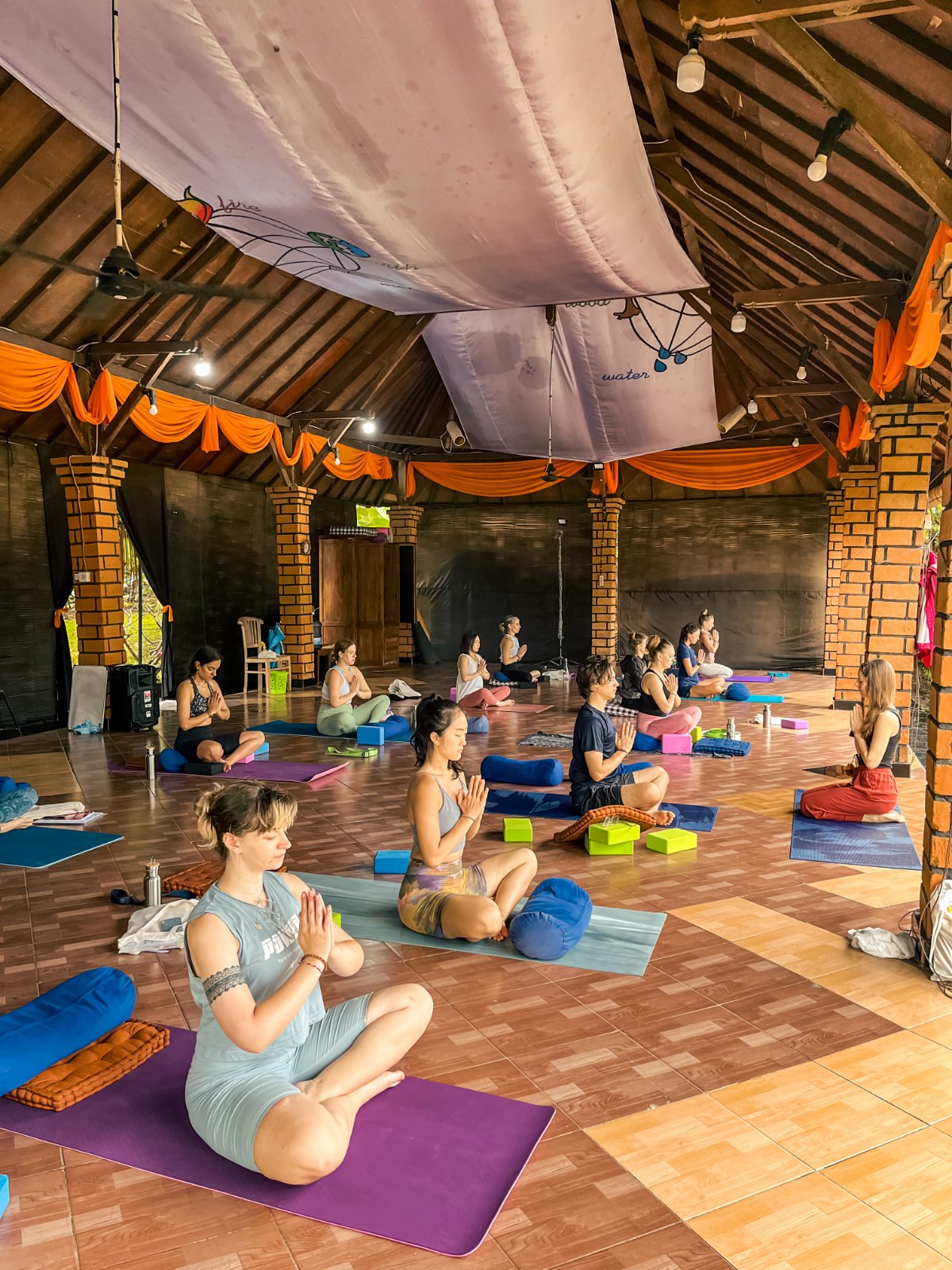
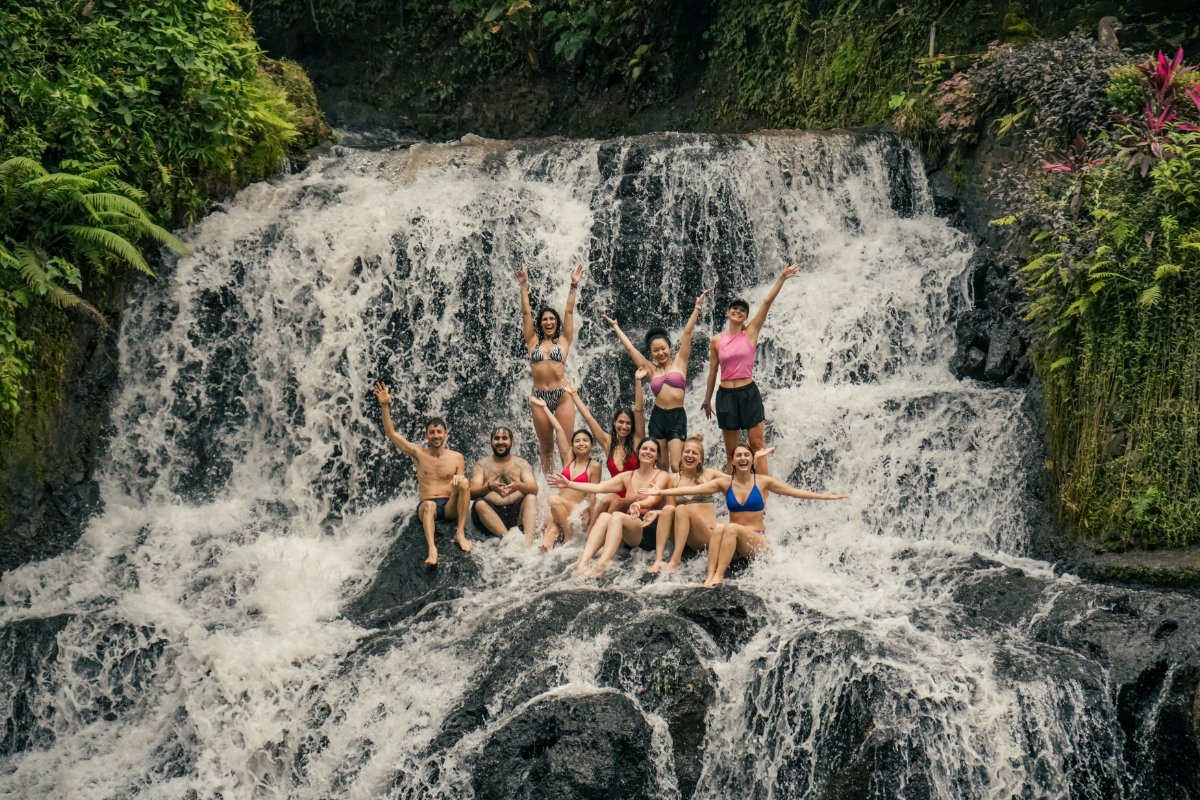
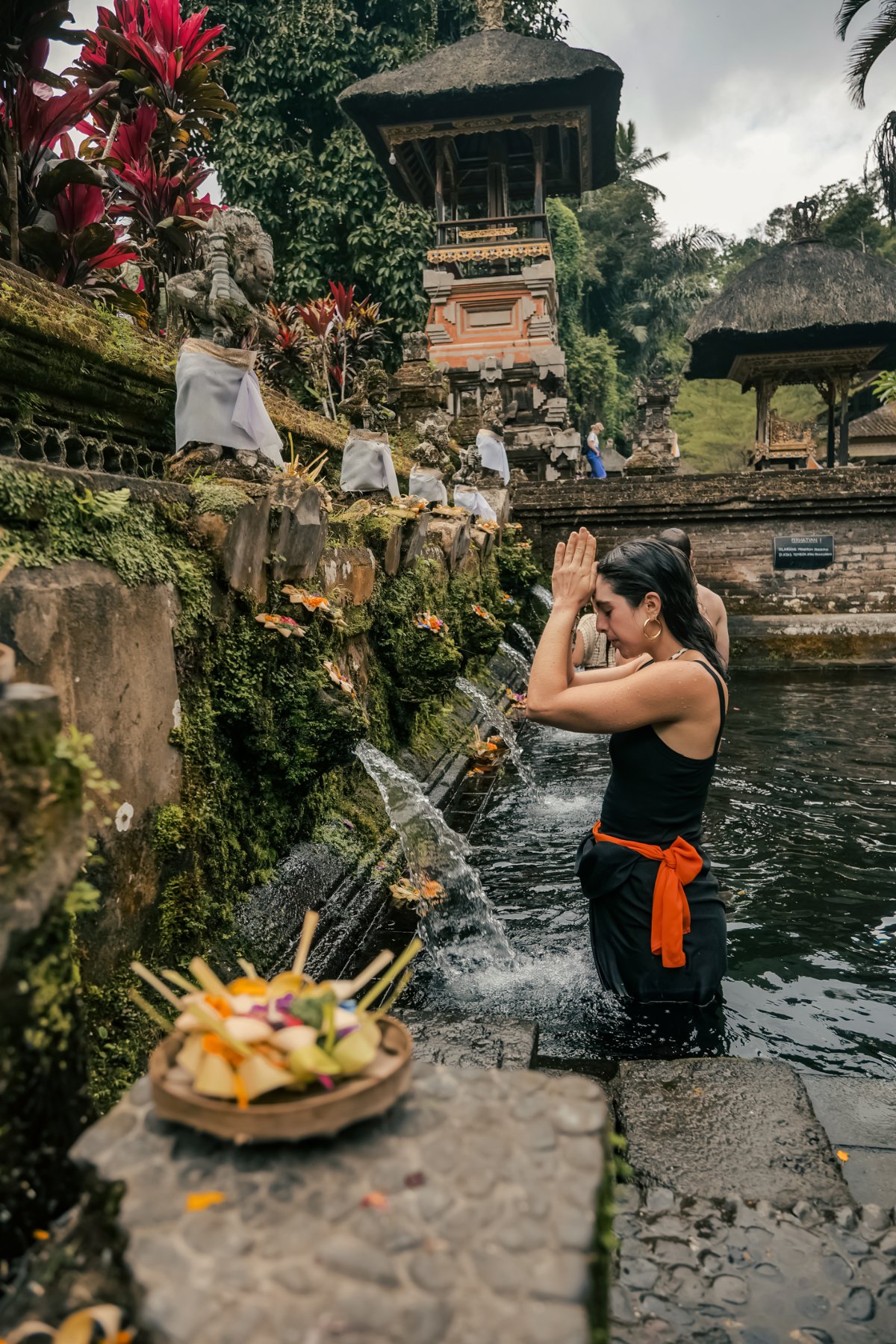
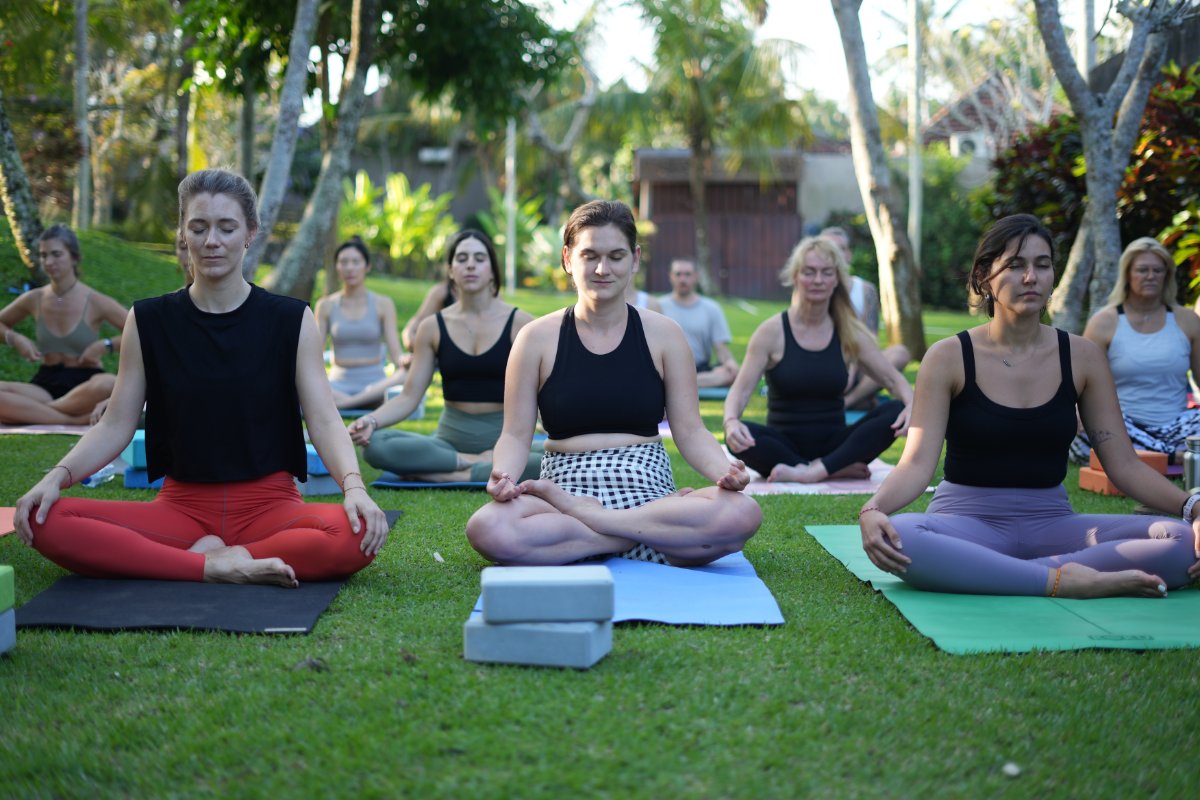
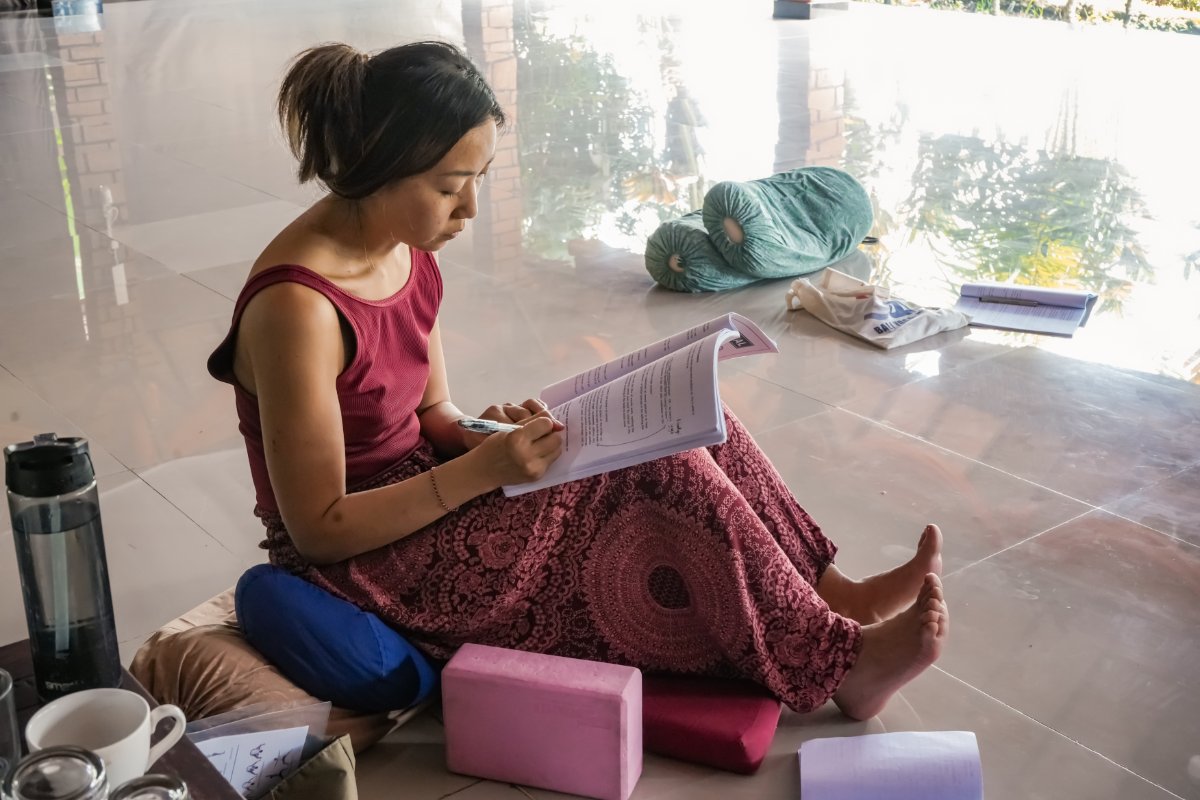
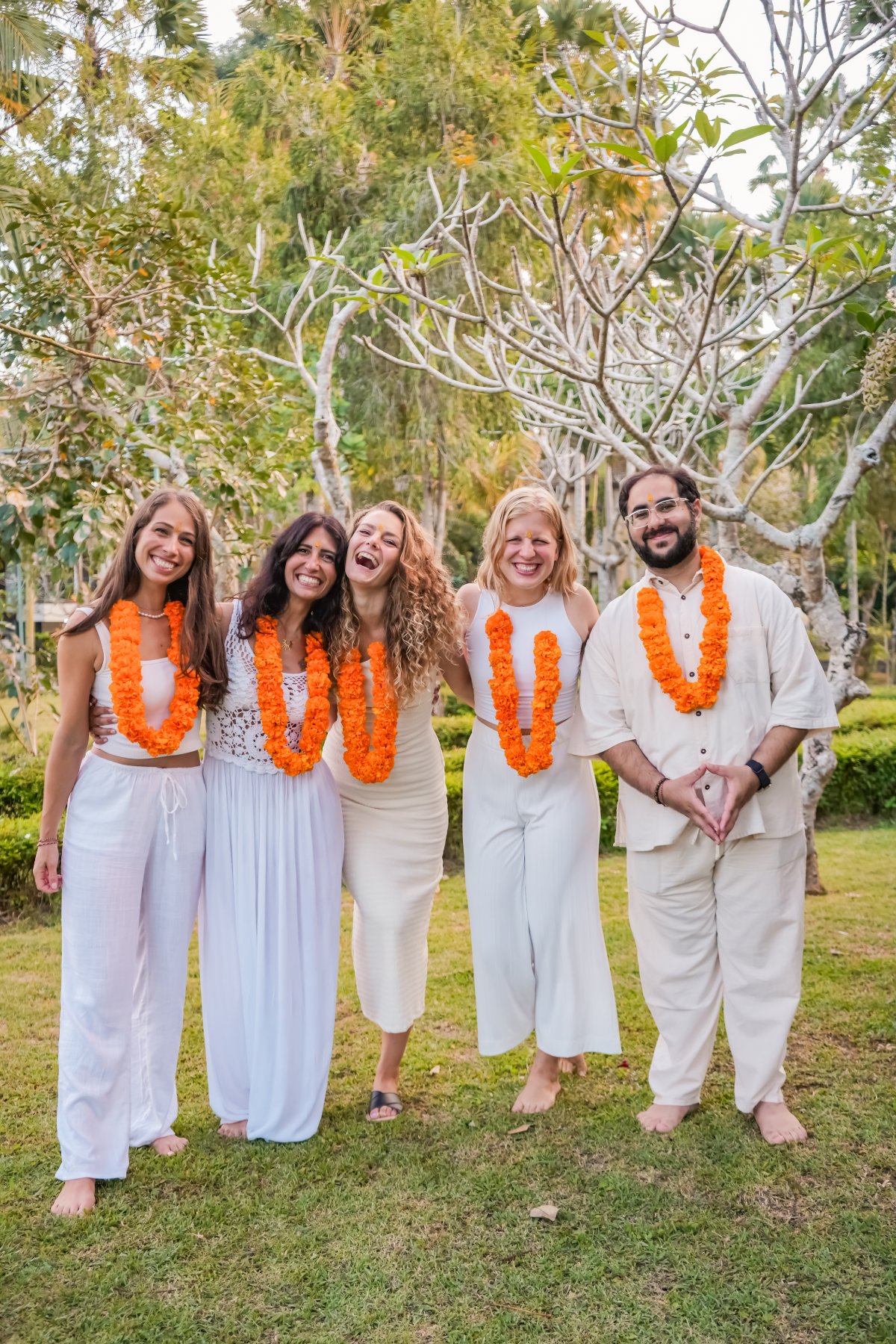
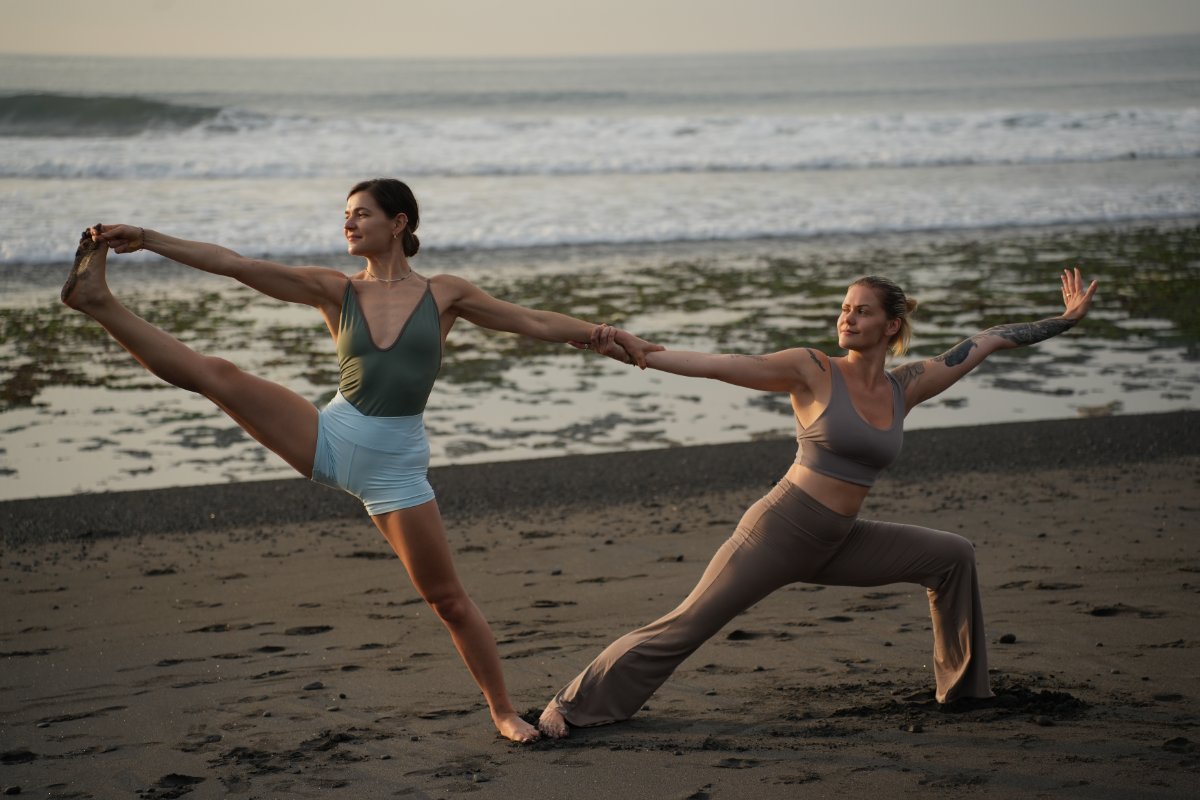


Code of Conduct
Rules and Regulations of AshramRules and Code of Conduct :
- Attending all classes is mandatory except for emergency cases.
- Uninformed leaves will affect student’s monthly performance.
- For good use of the course, the student will commit to dedicating at least two hours to the daily study.
- The teaching materials are protected by copyright and should not be misused
- Classes have their established start time that must be respected at all times.
- Smoking and alcohol are strictly prohibited in the school.
- Inform kitchen staff in advance if you don’t need food to avoid wastage.
- Always maintain discipline, and respect for teachers
- Clear your books of account before departure from Bali Yogpeeth.
- Before departure, return your books, mats or any other school belongings
- The accommodation provided is only for students.
- Relatives can be accommodated in another room at an additional cost.
- Students have to be present in all scheduled programs of Bali Yogpeeth.
Course Fees Terms and Conditions :
- The advance booking amount is Non-Refundable and Non-Transferable to any other person. Cancellation due to any reason will not be accepted and the deposit paid will be forfeited.
- To change the course month, we will need 10 days advance notice to make the required adjustments depending upon the availability of seats.
- If the students cancel the course after joining, the course fees will not be refunded.

FAQs on 200 Hour Yoga Teacher Training
Frequently Asked QuestionsA 200 hour teacher training course is a foundational program certifying yoga instructors, imparting essential knowledge, skills, and ethics for teaching yoga.
200 hour teacher training course is for 21 Days intense program which includes all the subjects in detail.
Ofcourse one can start teaching after completing the 200 hours YTTC course. But it is recommended to first practice on self and then start teaching.
Subject covered are Pranayama, Vinyasa flow, Ashtanga Vinyasa primary series, Anatomy, Alignment, Philosophy, Meditation.
Ideally an absolute beginner can do 200 hours to start the Yogic Journey. But a couple of months of practice would be beneficial to go ahead with 200 hours

